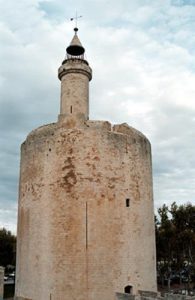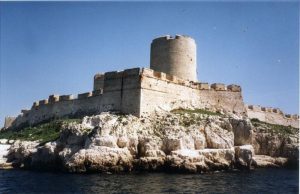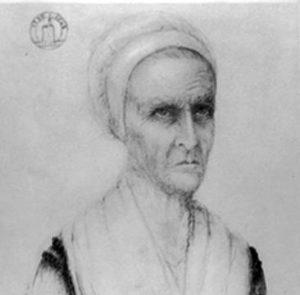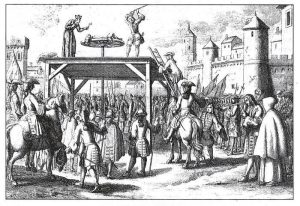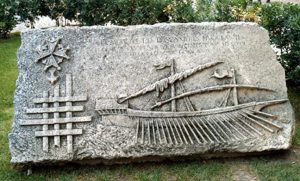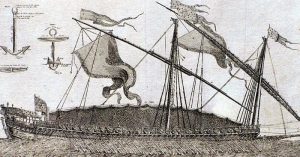Reasons for imprisonment : attempting to emigrate abroad, practising the Reformed religion.
After the Revocation of the Edict of Nantes (1685), Protestant men that tried to leave France, were, if caught, likely to be sent to the galleys and the women to prison.
Those who had helped them faced the same sentences.
Those who were arrested while attending illegal meetings suffered the same fate.
A quarter of the Protestants tried to emigrate when the Edict was revoked. Many were caught and prisons filled up.
The Constance Tower reserved for women after 1707
Immediately after the Revocation, the towers of the Aigues Mortes fortifications were used as prisons. In 1707, the Constance Tower was reserved for women sentenced to life imprisonment on account of their religious practise. The number of inmates varied from 17 to 34. Marie Durand, incarcerated at the age of 15, was detained for 38 years until 1768 when the last three female inmates were freed.
Carcassone
In 1712, numerous women, a lot from the Nîmes area, were incarcerated there, most for more than ten years.
Marseille
The forts of Saint-Nicolas and Saint-Jean were usually used for galley-rowers in transit before being sent overseas. A total thousand Protestants were deported to the West Indies, including men, women and children.
In the castle of If, which was in fact a prison, some Huguenots were held for long periods of time. The Protestant galley-rowers that consistently refused to convert were thrown into the dungeons.
The Island of Sainte-Marguerite (near Cannes)
An old fort was used as a prison for seven pastors who, after emigrating, had come back, as they were being urged by Claude Brousson not to abandon their congregations. They preached a lot before being arrested in Paris between 1689 and 1692. They were sent to the Island of Sainte-Marguerite and faced solitary confinement. They tried to communicate with each other or with the outside world and sang psalms, which their wardens forbade. After being mistreated, some were said to have lost their sanity.
Lyon
Lyon was a city those wanting to cross the border to Geneva, would go through. The local prisons, and especially the one in Pierre-Encize, filled up.
Crest Tower (Drôme)
The former dungeon was used as a prison for Huguenots from 1687 and 1740.
Homes for the New Catholics
There existed another form of confinement for those who would not renounce their faith.
Women were sent to convents without any kind of court trial and Protestant girls were taken from the custody of their parents and sent to “Homes for the New Catholics”. In both cases, they were induced to renounce their faith by converters who visited them repeatedly.

